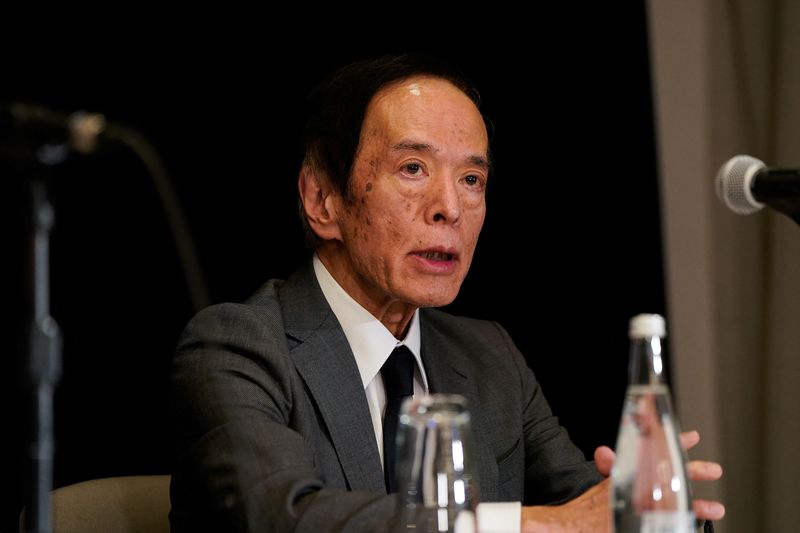How will BoJ’s YCC tweak impact the global finance market?
If the Bank of Japan tried to do something meaningful with its tweak to the yield curve control (YCC) strategy yesterday it looks as if it might have failed – and that’s of global concern.

It might appear that what the BoJ does with its monetary policy strategy stays in Japan. Photo: BoJ Governor Ueda Kazuo
>> What is the outlook for the US dollar/yen?
It might appear that what the BoJ does with its monetary policy strategy stays in Japan. But that’s not the case. For instance, its low-rate policy and suppression of JGB yields counterintuitively help to pull Japanese investment out of treasuries and hence could be contributing to the surge in US yields that we’ve seen, and that clearly matters to all countries, not just Japan.
While, on the yen, the same factors are contributing to significant yen weakness and, very possibly, helping to lift the US dollar to ever higher levels across the board; again, an issue that’s of concern the world over, and perhaps especially in emerging markets.
If Japanese policy has been contributing to the rise in US yields (given that Japan is the largest foreign holder of treasuries), and the general strength of the US dollar, yesterday’s policy changes did little to change the outlook. On the bond side, the issue is not so much the large spread between treasury yields and JGB yields, but the even higher currency hedging costs that come about because of the bigger spread between policy rates.
For instance, right now the one-year hedging cost for Japanese investors looking to buy treasuries is around 6%. That dwarfs the yield spread which is close to 4% if we look at 10-year treasuries and JGBs. In other words, there’s really no point in Japanese investors buying hedged treasuries and that helps explain why they have been exiting in their droves. Quite clearly they could buy treasuries on an unhedged basis but bond investors, even outside of Japan, usually prefer hedged purchases as they don’t want to take on the currency risk.
So, higher US yields don’t attract more Japanese demand as long as hedging costs are so high. This would seem to suggest that if the BoJ really wanted to move the dial on these flows it would need to lift short-term rates, or hope that the Fed starts to cut, or hope that the yield differential widens so much that the differential rises above the hedging cost. For the yen, if Japanese investors do switch to unhedged treasury purchases, these are likely to lift the spot rate, as opposed to hedged transactions through the FX swap market which do not. On the flipside, US investors get higher hedged returns in JGBs than treasuries and if they switch hedged JGB purchases for unhedged transactions, then this too does little to help strengthen the yen.
>> A history lesson on FX market intervention
In theory, at least, the BoJ did try to alter the balance a little yesterday as its 10-year JGB ceiling of 1% is now termed a “reference” which seems to suggest that yields can rise above this level. But will they rise sufficiently to alter the balance? It seems unlikely. One thing to bear in mind in the Standard Bank’s view is that the surge in treasury yields has been put down to a rise in the term premium as opposed to a significant rise in policy-rate expectations or anticipated inflation. And this rise in the term premium has been seen by many, rightly or wrongly, as a function of issues such as the government’s debt load and the prospect of continued bond sales by the Fed. But when we look at these issues through a Japanese lens the numbers become ever scarier.
For instance, US government debt might be up around 100% of GDP but it is more than two and a half times that in Japan. And when it comes to quantitative tightening, the Fed’s assets amount to around 30% of GDP right now, while the BoJ’s are a huge 125%.
“The point we are making here is that, even as JGB yields rise, they probably won’t rise enough to compensate for these vulnerabilities given that the BoJ will still be acting to hold 10-year yields relatively close to the 1% ‘reference rate’. In our view, any holding down of yields below their ‘true’ level by the BoJ just transfers the weakness to the yen and that could mean that the 150 level against the dollar starts to act as the floor, not the ceiling”, said the Standard Bank.








